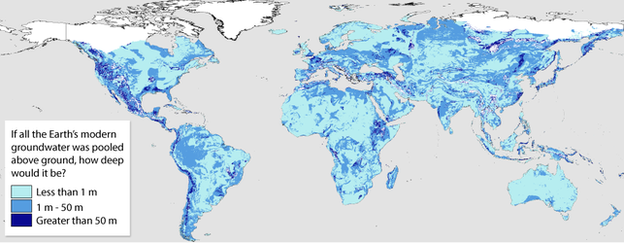
Groundwater: it’s one of the planet’s most exploited, yet most precious of natural resources. It is the world’s second largest store of freshwater with glaciers and ice caps being the largest. It is the water that has seeped underground into aquifers and reservoirs beneath the earth’s surface.
A new study has estimated the total volume of this groundwater to be in the vicinity of 23 million cubic kilometres but that only around 6% of this volume is what is known as “Modern” groundwater – water recycled through the water cycle in around 50 years. The rest of it can take thousands or even millions of years to cycle and be replenished.
Dr Tom Gleeson, a hydrogeologist at the University of Victoria in British Columbia and lead author of the study, says that it takes so long for the older groundwater to be replenished that it should be considered as non-renewable and that we are using our groundwater resources too fast – faster then they’re being renewed. “It’s the groundwater that is the most quickly renewed – on the scale of human lifetimes”. Yet it is the most sensitive to climate change and to human contamination.
In order to quantify how much water is stored in the top 2km of the planet’s surface, Dr Gleeson and his team combined large data sets with elements of modelling. They included information on the permeability of rocks and soil, porosity and all that is known about water table gradients with the collection of thousands of tritium measurements providing the key to determining the age of the stored water.
Due to thermonuclear bomb tests, the level of tritium spiked in the atmosphere around 50 years ago and has provided a tracer for all the rain that has fallen and made it’s way underground since then.
In the map above the darker blue shows where the water is very quickly renewed with the lighter blue showing the older groundwater.
“Since we now know how much groundwater is being depleted and how much there is, we will be able to estimate how long until we run out,” says Gleeson. To do this, he will be leading a further study using a global scale model.
Sources:
- 16 December 2015
- groundwater, Water
